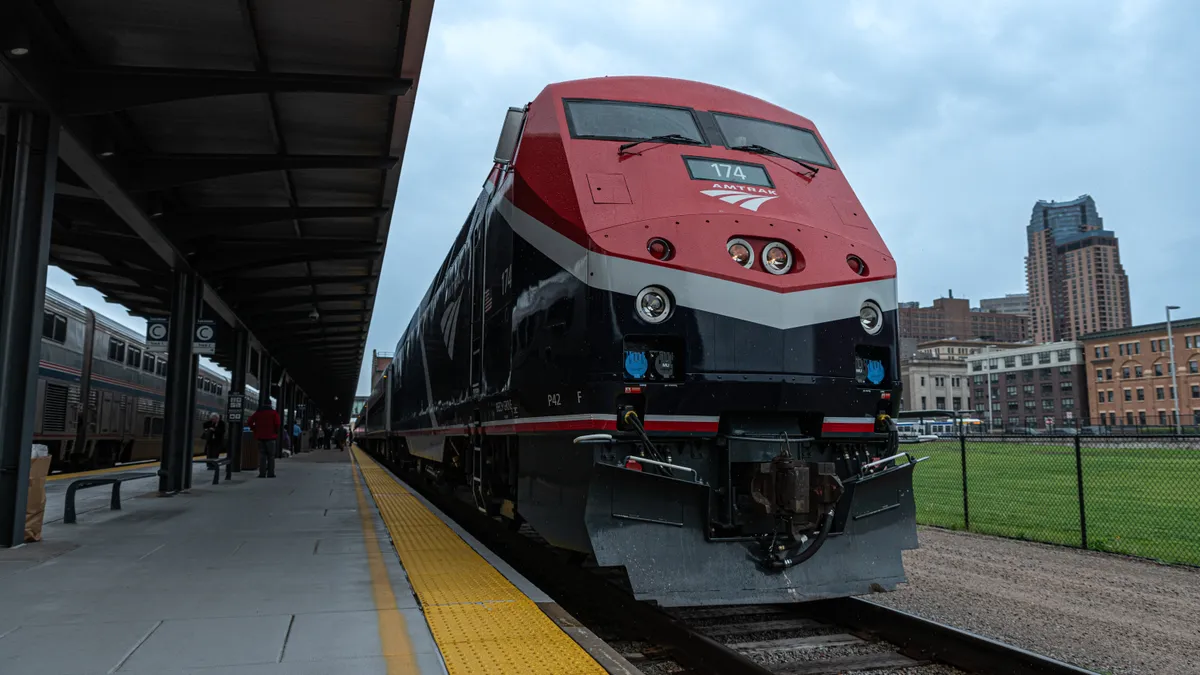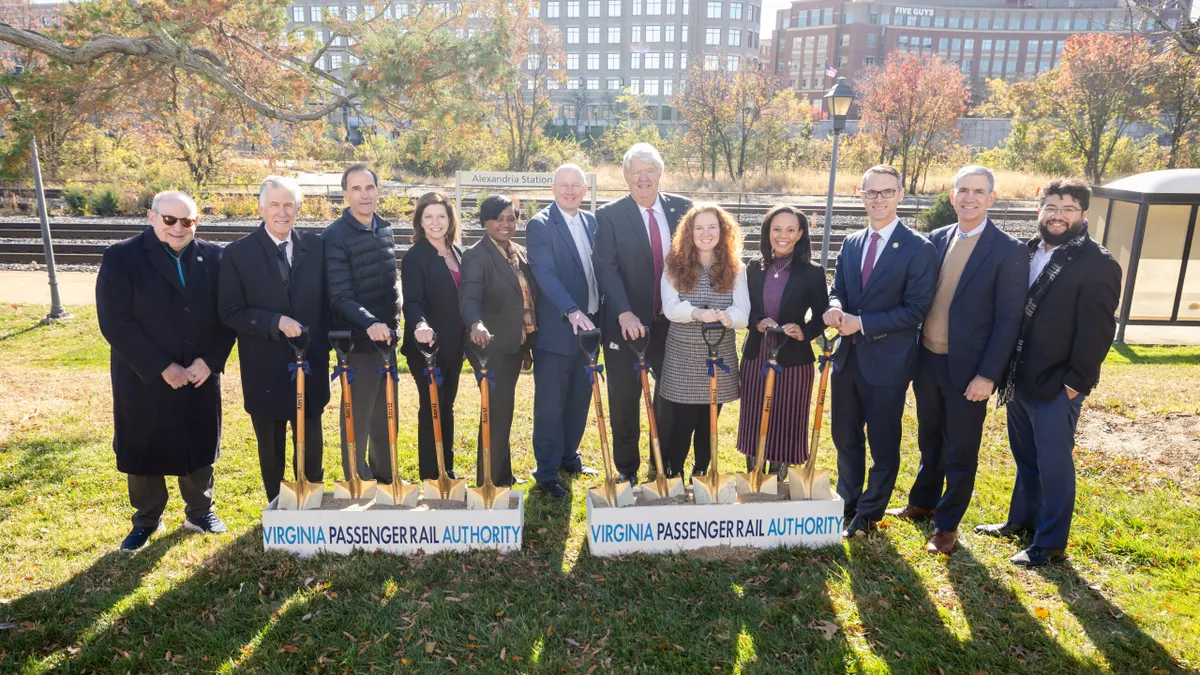More than a year after they were unceremoniously dropped on city sidewalks across the country, it’s clear that scooter fleets are here to stay. What’s less clear is where those scooters are supposed to be ridden — and who's responsible for making that infrastructure safe.
Denver is on the verge of wrapping up a pilot program that saw five companies operate scooter fleets in the city. Cindy Patton, the interim director of transportation operations at Denver Public Works, said the pilot showed the potential power of scooters as a mobility solution, but also highlighted many issues that need to be addressed.
Vehicle and permit fees that the city charged during the year-long pilot, Patton said, "undervalued" the resources the city would need to spend to balance problems around safety, such as refining the existing bike lane network to handle the vehicles.
"We did not cover our costs, not anywhere close," she said.
Lack of infrastructure is a challenge cities are facing as scooters zip past novelty status. Last year, riders took some 38.5 million trips on e-scooters in the U.S., according to the National Association of City Transportation Officials (NACTO), yet there is still no national guidance on where scooters should be used.
As governments craft regulations that dictate where scooters can safely be ridden — sidewalks, streets or bike lanes — they are also now having to look whether existing infrastructure is good enough to handle them.
The debate has taken on new urgency as accidents, injuries and deaths pile up. In Atlanta, four scooter riders have died in accidents since the spring. In response, Mayor Keisha Lance Bottoms promised an infrastructure overhaul, writing in the Atlanta Journal-Constitution that the city would install temporary barriers, painted demarcations and "any tool we can find to complement" its 188 miles of dedicated bike and scooter lanes.
"This new trend in micro-mobility compels us to find the safest, most pragmatic ways to manage these options, and facilitate their proliferation, without endangering users and others," Bottoms wrote. She added that the city would review its permits and would likely reduce the number of operators. It is not clear how the city will pay for the additional infrastructure.
Meanwhile, David Kemp, the senior transportation planner for the City of Boulder, CO, said that as cities work to make their streets safer for a product they might not have asked for, it may be time for the companies to pay up.
"If we’re going to designate certain streets where these scooters can be ridden, let’s see what these companies can do to help us fix up our infrastructure so you can ride them safely," Kemp said at the Colorado Smart Cities Symposium in Denver last week.
Where to ride?
When scooters first appeared in cities, much of the initial regulatory debate revolved around where they should be driven. Too fast to go on sidewalks, but not safe enough for streets, scooters seemed to fit best in bike lanes. But many cities lack sufficient bike lane infrastructure, and scooters can need extra care.
Their small wheels and fast speeds mean that small cracks and bumps cause more problems than they would for cyclists. Despite educational efforts, many riders still use the vehicles without helmets, making spills or collisions that much more dangerous.
In Denver, Patton said several rounds of regulation settled on forcing scooters into bike lanes, where they can be with vehicles of similar speeds. In fact, Patton said Denver is now looking at bike lanes as more "ABC" lanes: "anything but cars." The city has committed to building a network of 125 miles of them over the next five years.
"We want to create a network with high comfort, high ease of use for folks to ride in," Patton said.
Some cities looked to micromobility companies as an easy source of funds for those sorts of improvements. Seattle used permit fees to collect $1 million from Lime, Jump and Lyft for dockless bike-sharing programs. According to the city, $400,000 of that went to install parking spots for 1,500 bikes and another $50,000 went to a partnership with the Outdoors for All Foundation for free adaptive cycle rentals for people with disabilities.
Other money went to operational and data collection costs, including a $50,000 education campaign on the impact of unsafe parking.
Last fall, the Indianapolis City Council approved a measure to collect more money from scooter companies to build an estimated $2.8 million annual fund for infrastructure. That money, said city project manager Ben Easley, will go to a multimodal project recommended by Indy Moves, a 2018 plan to overhaul roads and install more sidewalks and bike lanes.
"All of the proposed improvements will be accessible to scooter riders as well as bicyclists, and all have the goal of a safer commute," Easley said in an email, although no changes have been made to the Indy Moves plan to specifically account for scooters.
Still others, faced with major safety concerns, have found it easier to just look to limit the scooters altogether. Nashville, TN Mayor David Briley called for a ban on scooters in June after a rider was killed in a collision with a vehicle. The city council recently voted to temporarily keep scooters as new rules are written and a process is set up to allow up to three companies to operate full-time.
If these devices return in the future, it will be after a public process, on our terms, with strict oversight for numbers, safety, and accessibility. I have asked the Metro legal team to draft this legislation, and I trust the Metro Council will move on it quickly.
— Mayor David Briley (@MayorBriley) June 21, 2019
Still, even supporters say more attention is needed to measure their impact; Councilmember Jeremy Elrod told the Nashville Tennessean that "it’s going to take us a while to work on these scooters to get it right," adding, "we just can’t turn it down because they’re hard."
The payment problem
It's possible companies will be asked to pay more money as their products become increasingly popular — though it's questionable if the operators will pony up. Bird made waves last year when it announced a $1 per scooter per day donation to some cities to pay for bike lane maintenance, part of the company’s campaign to be more responsible citizens.
But that program was phased out earlier this year when Bird found that some cities were not using the money for its intended purpose, the company’s director of government partnerships Maurice Henderson said at a panel in Denver last week. Most cities, he said, were putting the money into general funds and "plugging budget holes as opposed to plugging potholes."
Salt Lake City was one partner that received the funds, although city spokesman Matthew Rojas said the collective funds were "a very small amount."
"It costs a tremendous amount to build a protected bike lane,” said Rojas, "and this wasn’t going to cover it." The city also collects limited fees from the scooters because of city rules, although it is working on an ordinance that might bring in more money.
"It costs a tremendous amount to build a protected bike lane ... and this wasn't going to cover it."

Matthew Rojas
Salt Lake City spokesman
Bird’s Henderson said the company is still interested in helping governments wherever possible, and other companies have made efforts to improve rider safety on their own. Patrick Quintana, market manager for Lyft, said on the same panel that companies also have valuable ridership and route information that can inform where cities can target their investments.
"Every city is going to tailor this to their needs and define where micromobility devices should be operating," he said. "When we share data with a city … they can use it and see insights they weren’t otherwise able to see."
Denver’s Patton said the city is in a "continuing dialogue" with operators as they examine more infrastructure and how best to handle the companies going forward. Given how much scooters have taken hold on streets, she said, it makes sense for the city to plan for them, but it can no longer bend over backwards to keep companies happy.
"It’s a balance of how to keep yourself in a market that’s open to these things versus being so restrictive that there’s no interest and no private investment," she said. "It’s a possibility that these scooters go away, but we need to continue to strive towards our goals."



















